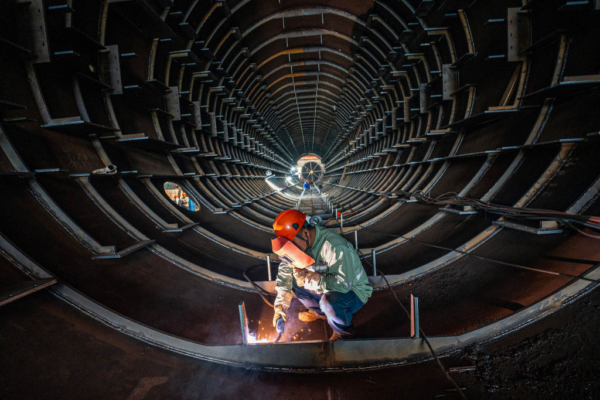As an important industrial raw material, the steel industry is seen as an “economic barometer” of economic activity. In August, affected by price declines and demand downturns, China’s steel production decreased by more than 10% compared to the same period last year.
Despite the scorching summer heat, last month was a bone-chilling winter for China’s steel industry, the world’s largest steel producer. Steel prices hit multi-year lows, demand weakened, losses were severe, and the issue of overcapacity once again became prominent. With losses continuing to expand, more and more steel mills are choosing to shut down furnaces.
The largest supplier, Baowu Steel Group Co., Ltd., faces increasingly severe losses for every ton of steel produced. The chairman of the group, Hu Wangming, stated at the 2024 semi-annual work conference that this crisis may be “longer, colder, and more difficult than we anticipated.”
The Chinese steel industry experienced two downturns in 2008 and 2015. Through massive stimulus measures, the crises were eventually resolved. However, this time, with the normalization of China’s economic downturn, the outlook appears even more bleak.
Analysis from Nikkei Asia indicates that currently 99% of Chinese steel mills are operating at a loss. Despite the high current production levels of Chinese steel enterprises, investors are selling off due to disappointment over low steel prices.
Data from the National Bureau of Statistics of the People’s Republic of China shows that crude steel production in August was 77.9 million tons, a 10.4% decrease compared to the same period last year. This is the weakest August since 2017 and deepens the overall decline for the year. The total production for the first eight months of this year was 691.4 million tons, a 3.3% decrease year-on-year.
By the end of August, steel inventories in Chinese cities had decreased. According to data from the China Iron and Steel Industry Association, market steel inventories were 9.36 million tons (21 major cities, 5 representative projects), a 2.7% decrease compared to the same period last year.
This marks the first time in nearly six months that it has fallen below the same period last year. While reduced production by some steel producers is considered a factor, the steel market remains in a low-price range due to weak demand from the real estate and manufacturing industries.
Over the past two decades, China’s economic development model, driven by the Communist Party’s reliance on real estate and infrastructure investment, has fueled continuous growth in steel demand. However, China’s steel demand is now declining, particularly this year, exacerbated by the prolonged slump in construction activity this summer.
Entering September, prices of commodities closely related to steel production in the black series continued to decline. Last week, rebar futures hit a new low of 2,988 yuan/ton for over 7 years; iron ore futures touched a low of 662 yuan/ton, the lowest since June 1, 2023; on September 11, coking coal futures fell to 1,182.5 yuan/ton, also the lowest in over 15 months.
September and October are traditionally the peak seasons for the steel industry, known as the “Golden September and Silver October” of steel prices. Industry insiders believe that the current weakness in the steel industry still exists, and seasonal rebound in steel demand is expected. Although the overall rebound in steel prices is not expected to be large, steel companies are expected to narrow their losses.

